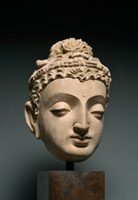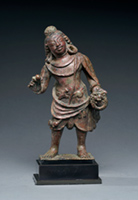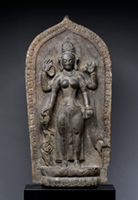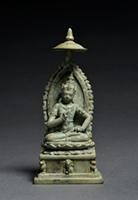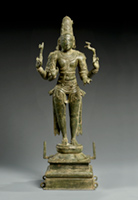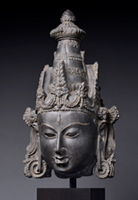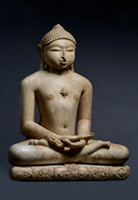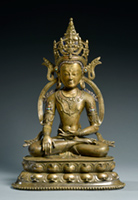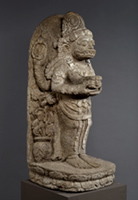
Lange Gasthuisstraat 28
2000 Antwerpen,
Belgie
Tel: 32-3-22 67455
Fax: 32-3-22 66484
Email:
AVATAR: Resurrection of the GodsThe Sanskrit word avatar means ‘descent.’ It refers to the descent of divinity from heaven to earth and is accordingly used to describe an incarnation of God. The term avatar refers to a soul who has been freed from maya (delusion) and is sent back into existence to help other beings. When an avatar is resurrected he inspires us with a state of attained consciousness. Hindus believe an avatar to be a direct manifestation of God, rather than a re-incarnation on earth of a soul that has been liberated. Not only do avatars possess ‘Divine Consciousness,’ but they appear in human form to reveal a reality completely complementary to our own. Their presence, based on knowledge and experience, helps to make us aware of our divine potential. World mythology is full of religious figures who have undergone resurrection. The idea of an avatar is rooted in the religious practices of Hinduism where, in a philosophical or theological context an avatar is a manifestation of God. Avatars live upon the earth, go through the same lifecycle as other living beings to resolve some fundamental problems of existence, or eliminate evil. In today’s world, avatar remains a fundamental belief of Hinduism, where followers of Vishnu believe that occasionally he incarnates in various avatar forms as part of his obligatory duty to maintain the order and regularity of the worlds. Krishna as one of the ten avatars of the god Vishnu, allowed the god to better understand his creation and interaction with his people. After many adventures, wars, and explorations of the nature of the universe, Krishna attends a festival. At this festival conflicts break out and Krishna retires to a wood to meditate. While he is contemplating under a tree, a hunter mistakes him for a deer and fatally wounds him with an arrow. Krishna dies and his body is cremated but, being a god, he doesn’t decay and ascends into heaven. Most Buddhists believe in samsara or the cycle of rebirth, governed by the law of karma : Good conduct produces good karma and conversely, bad conduct produces evil karma. Buddhists believe that the soul’s karma transmigrates between bodies and becomes a ‘seed of consciousness’ in the womb. Like Hindus, Buddhists see unenlightened samsara as a state of suffering; we suffer because we desire the transient. Only after achieving a state of total passivity, and freeing ourselves from all desire, are we able to escape from samsara and achieve ‘Nirvana’ or salvation. An individual can end the cycle of reincarnation by following the ‘Eightfold Path:’ correctness in view, intention, speech, action, livelihood, effort, mindfulness and concentration, all leading to spiritual enlightenment. Jan van Alphen counts as one of the world’s most respected experts in the field of Asian Art. His impressive career includes positions as Chief-Curator of the Antwerp Ethnographic Museum and the Rubin Museum of Fine Arts, in New York. For years he was the Chairman of the Scientific Committee at “Bozar” The Center for Fine Arts in Brussels. The large number of exhibitions and publications by Jan van Alphen have made a significant contribution to the understanding and appreciation of Asian Art. Today he is a major consultant for numerous museums, art fairs, auctions, and art institutions. I am delighted and honoured that after writing the catalogue: Divine Presence, master sculpture from Asia, in 2018, he has, once again, been committed to direct and write the entries in the present catalogue: Avatar, Resurrection of the Gods. The catalogue presents a selection of Asian masterpieces, all with a provenance from old established collections. The works of Art here presented are true Avatars; divine incarnations of Gods, icons created to evoke and provide spiritual encouragement. All the works are accompanied by extensive written documentation. Marcel Nies, 2019 Marcel Nies has specialised in Oriental Art since 1972. Composed of a diversity of art, his collection includes sculptures, paintings, and ritual objects from India, the Himalayan mountains, and South-eastern Asia. The gallery displays this collection, as well as new acquisitions and special 'theme' exhibitions which take place every year. |

